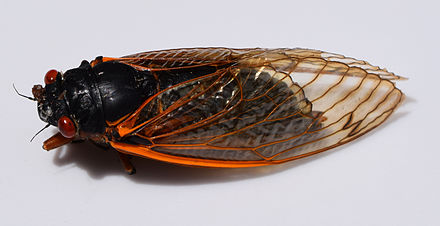Cicadas are a type of insect belonging to the superfamily Cicadae in the order Hemiptera. Here are detailed information about cicadas and their living habits:

There are hundreds of different species of cicadas distributed all over the world, mainly divided into two categories: winged cicadas and hymenopteran cicadas.
Size: Cicadas are generally larger, with some species having a wingspan of several inches.
Transparent Wings: Cicadas have thin transparent wings and beautiful colors, often green or transparent.
Compound Eyes: They have well-developed compound eyes and can make loud noises.
Cicadas are distributed around the world, but are mostly found in warm regions.
Cicadas' habitats include trees, shrubs, grass, and various areas of dense vegetation, and they often live underground.
Cicadas are herbivorous insects, their larvae feed on the roots of plants, and their adults mainly suck plant juices.
Incubation cycle: Cicadas go through different larval and adult stages, including a larval stage that lasts several years underground.
Reproduction: The life cycle of cicadas varies depending on the species. Generally, the reproduction cycle is longer and the adult life span is shorter.
Mature cicadas mate and lay eggs. Some species lay their eggs on trees, while others bury their eggs in the soil.
Cicadas are famous for their unique sounds. On hot summer days, the cicadas chirp in the woods, making you forget to leave.
Cicadas have an important impact on the ecosystem. As herbivorous insects, they are food for other organisms and can also affect the growth and reproduction of plants.
In some cultures, cicadas are given symbolic meaning and are seen as a symbol of hard work or loneliness. At the same time, they are also used as traditional medicinal materials.
Overall, cicadas are a group of insects that are found around the world and are known for their unique life cycles and vocal habits. In many places, cicadas are also considered an impressive part of nature.
animal tags: cicada
We created this article in conjunction with AI technology, then made sure it was fact-checked and edited by a Animals Top editor.